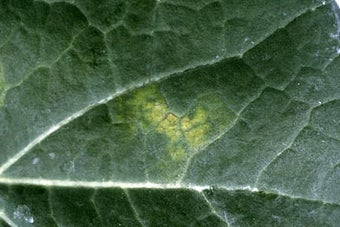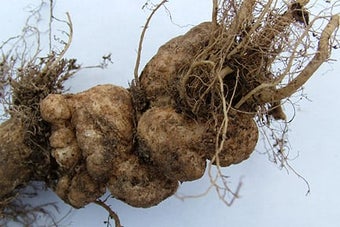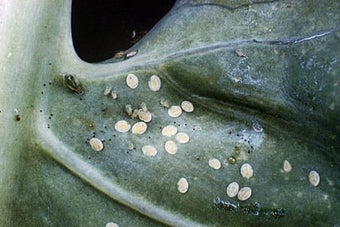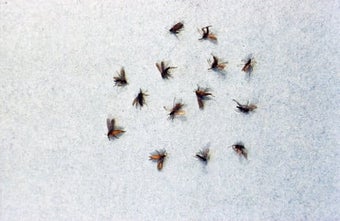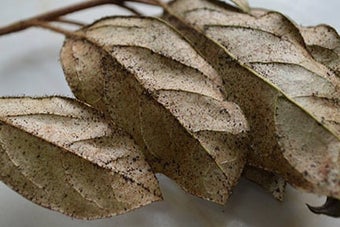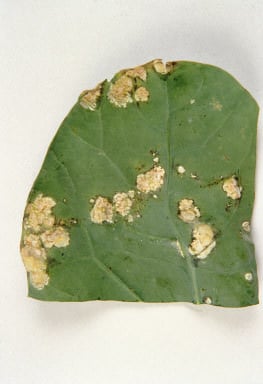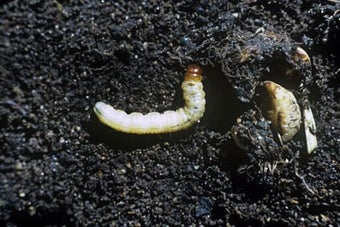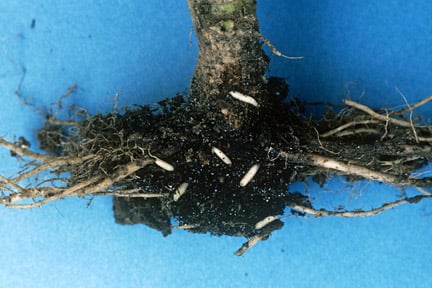
Quick facts
Common name - Cabbage root fly
Scientific name - Delia radicum
Plants affected - Cabbages, cauliflower, Brussels sprout and other brassicas, oriental greens, swede, turnip, radish
Main symptoms - Plants grow slowly, wilt and die as their roots are eaten. Edible roots can also be tunnelled
Caused by - Larvae of a fly
Timing - April to September
What is cabbage root fly?
Adult cabbage root flies resemble house flies. The larvae are white, legless and headless maggots that feed on the roots and can kill seedling and recently brassicas.
The fly belongs to the family Anthomyidae, it is a diverse group of flies with over 100 species Britain. Whilst some feed on roots, others are leaf miners such as the beet leaf miner. Most do not cause damage to garden plants. More information on this fly family is available from the Anthomyidae recording scheme.
Symptoms
Vegetables affected by cabbage root fly can show the following:
- Cabbages and other brassicas make poor growth and may wilt and die, especially recent transplants in early summer
- Root crops, such as swede, turnip and radish can be ruined when white maggots, up to 9 mm long, tunnel into the edible parts of the roots
- Occasionally the maggots will tunnel into individual buttons on Brussels sprout plants
Management
Check susceptible plants frequently from spring onwards so action can be taken before a damaging population has developed.
- Recent transplants can be given some protection by placing a brassica collar around the base of the stem. These can be purchased from garden centres or they can be made from circles or squares, about 8-15 cm (3¼-6 in) across, using carpet underlay, roofing felt, cardboard or similar materials. The collar prevents the female fly placing eggs on the soil surface close to a host plant. Eggs deposited on the collar often dry up and fail to hatch
- Plants can be protected by growing them under the cover of an insect-proof mesh. Horticultural may be preferred for seedbeds as it will also help warm the soil. This can also help reduce other brassica problems such as cabbage caterpillars. It should be kept in place throughout the growing season
- Crop rotation should be practised. Otherwise cabbage root flies can emerge from overwintered pupae in the soil under the fleece or mesh cover, if host plants are grown in the same piece of ground in successive years
- Encourage predators and other natural enemies in the garden such as birds, hedgehogs and ground beetles. Some ground and rove beetles are efficient predators of root feeding maggots
- A mixture of pathogenic nematode species (Fruit and Vegetable Protection) is sold as a biological pest control for use against cabbage root fly larvae and other insects, including the larvae of carrot fly, onion fly, leatherjackets, fungus gnats, caterpillars, gooseberry sawfly, thrips and codling moth. Please be aware that nematodes can also kill non-target species
Downloads
Biological control suppliers (Adobe Acrobat pdf document listing biological control and suppliers)

Biology
There are three generations of cabbage root fly during the summer but it is the first generation in late spring-early summer that is often the most damaging.
Adult cabbage root flies resemble house flies in size and appearance.
The larvae are white, legless and headless maggots that are up to 9 mm long. They feed on the roots and can kill seedling and recently brassicas. Later generations are less damaging to cabbages and other leafy brassicas, as older plants have larger root systems and are better able to tolerate the damage. Host plants where the root is the edible part, such as radish, turnip and swede, are damaged by any of the generations.
When fully fed, the larvae go into a brownpupal stage in the soil, either emerging as adult flies a few weeks later or remaining in that state overwinter.







